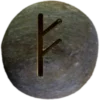Last Updated on November 5, 2024
Table of Contents


Draupnir (pronounced “DROWP-neer”) is a powerful, gold ring crafted by skilled dwarves. Its name means “Dripper,” referring to its unique ability to multiply. Every ninth night, it creates eight identical rings, each just as valuable. Known for both its beauty and mystery, Draupnir connects deeply to Odin, who uses it as a symbol of power, abundance, and renewal. This special ring first appears in the Prose Edda and Poetic Edda, two ancient sources preserving Odin’s and Draupnir’s stories. In these accounts, it holds a central role in significant events and exchanges, showing its importance to gods and dwarves alike.
According to legend, Loki, after causing trouble with the gods, goes to the dwarves to compensate. Two skilled dwarves, Brokkr and Sindri, create three magical objects to restore peace. Draupnir is one of these objects, symbolizing the wealth and prosperity of the gods. Odin later places it on his son Baldur’s funeral pyre, honoring his memory. Yet, even within this gesture, Draupnir’s return through new rings signifies that even in loss, renewal follows. This ring embodies endless cycles and is closely tied to both material wealth and spiritual significance.
Draupnir’s multiplying magic reflects Odin’s connection to growth and the eternal return of resources. It represents divine strength and abundance, ensuring the gods never lack what they need. Odin treasures Draupnir, wearing it as a mark of power and unity among divine beings. This legendary ring holds both respect and awe across realms and is essential to many divine tales.
Runes Associated with Draupnir
The Elder Futhark rune Fehu (pronounced “FAY-hoo”) connects well with Draupnir. Fehu symbolizes wealth, prosperity, and abundance, all qualities embodied by Draupnir’s multiplying power. The rune Jēra (pronounced “YARE-ah”) also applies, representing cycles and harvest, matching Draupnir’s ability to produce more rings over time.
Importance in Asatru
In Asatru, Draupnir symbolizes growth, abundance, and continuity. Followers see Draupnir as a reminder of natural cycles and the endless flow of resources. Honoring Draupnir encourages respect for prosperity and teaches that wealth flows and returns. As a symbol, Draupnir inspires faith in renewal and resilience, aligning with Asatru’s focus on living harmoniously with nature’s cycles.

